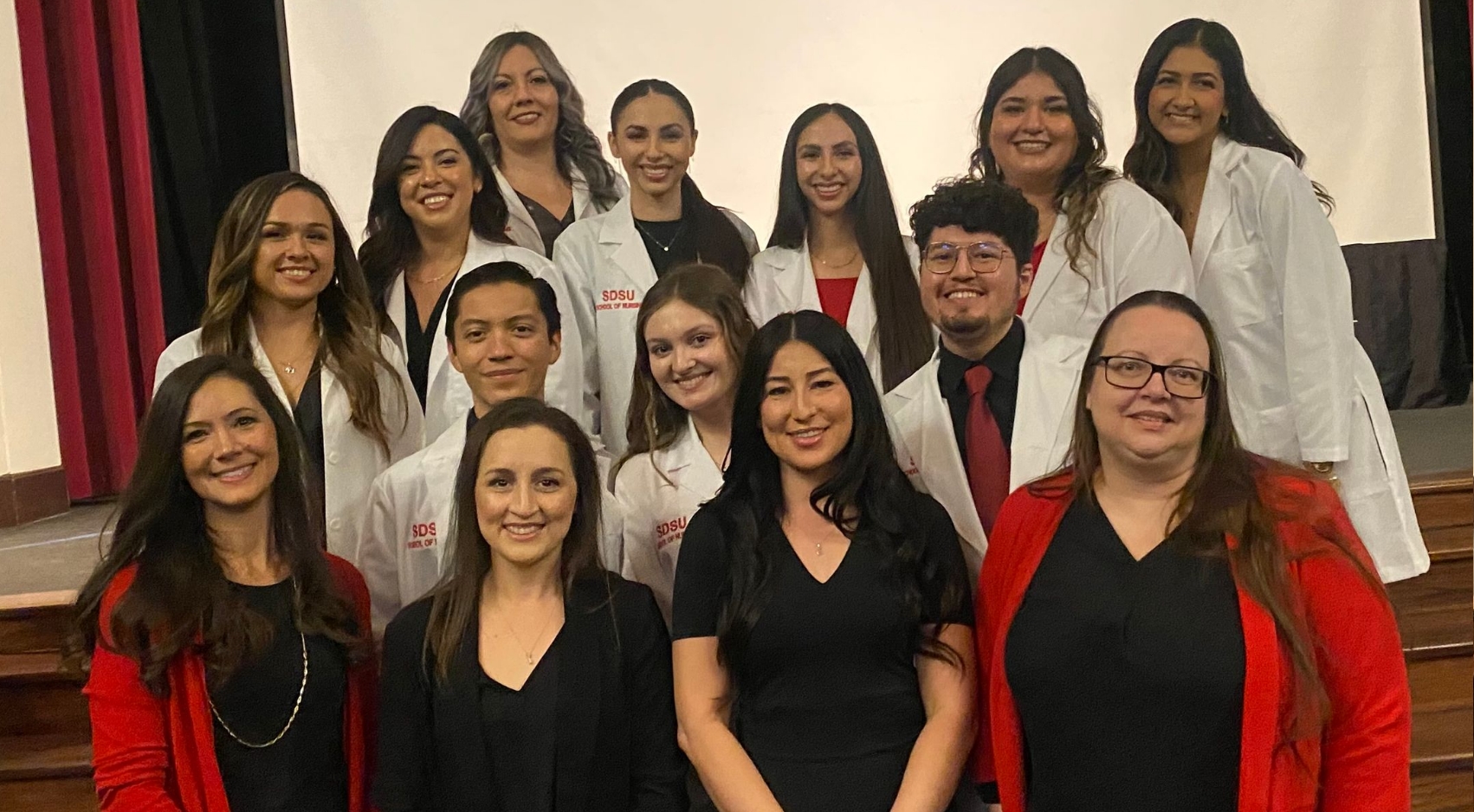SDSU Imperial Valley Holds First White Coat Ceremony for Nursing Students
Rite of passage symbolizes entry into the profession and the beginning of real-world clinical experience.

San Diego State University Imperial Valley last week held its first white coat ceremony for the inaugural class of its accelerated pre-licensure Bachelor of Science in Nursing (BSN) program.
“The white coat ceremony is symbolic because it's basically a rite of passage to emphasize the importance of compassionate patient care at the very start of clinical training,” said Brooke Plourd, clinical placement coordinator for SDSU’s School of Nursing.
Ten nursing students received their white coats, pledging to uphold the ethics of nursing. All are community college transfer students who finished the nursing fundamental courses for the two-year program this fall.
“This rite of passage symbolizes a commitment to uphold the Nursing Code of Ethics and dedication to serve humanity with care and compassion,” said Karen Macauley, director of the School of Nursing. It’s also a celebration of their progress and a chance to reflect on their potential impact on the local community, she added.
“With these white coats, we are entrusting them to care for our loved ones,” said Guillermina Gina Núñez-Mchiri, dean of SDSU Imperial Valley.
In early 2023, the students will begin their clinical rotations at agencies in the Valley and Calipatria State Prison.
“For the first time, they're outside of the classroom or our controlled lab, and they're working with real-life patients,” said Helina Hoyt, associate director of nursing at SDSU Imperial Valley.
During their rotation at the prison, the cohort will focus on psychiatric mental health and work with a multidisciplinary team practicing the “whole person” care model. Working in the prison system will allow the students to follow patients over an extended period of time to get a more complete picture of their health, according to Hoyt.
“You think about the physical, the psychosocial and the spiritual aspect of a patient,” said Hoyt. “We're thrilled that they're going to learn about that first in that environment,” she added.
The accelerated nursing program debuts at a time of staffing shortages for local healthcare agencies and the additional strain on healthcare capacity in the Valley brought on by COVID-19.
“If you have delays in care and gaps in medical follow through and follow up, that actually means a loss of people's lives,” said Núñez-Mchiri. The shortage can also be a strain on families of limited means, especially if burdened with a two-hour drive to see a specialist in San Diego.
To address the shortage, the healthcare agencies turned to traveling nurses and state nurses, which raised healthcare costs, according to Macauley. Instead, the accelerated nursing program was designed with a “grow-your-own” approach and mentality.
“Many nurses go out and work in these hospitals, but they don't stay because they're not from the Valley,” said Macauley.
The highly competitive program exclusively recruits students residing in Imperial County, and the students plan to serve there after graduation. “Patients do better when they have bachelor's-prepared nurses, and especially when nurses understand the culture,” said Hoyt.
“One thing we're doing in the nursing profession is to make sure that the nursing profession represents the populations that we serve so they understand the complexities and intricacies of the social determinants of health in the Imperial Valley,” said Macauley.
“Imperial County is considered one of the highest rates of asthma, tuberculosis, diabetes, hypertension, and it's a very underserved area and rural,” she said. “So once you have been part of these communities, you have the drive and passion to ensure that all the residents have access to health care.”
In addition to the 10 transfer students, 10 first-year students also began their nursing studies in the fall and will receive their white coats in fall 2023.
The accelerated Imperial Valley program will take them only three years to complete instead of the usual four, with instruction continuing through the summer to help meet hospital demand.
Even so, Hoyt said some students have waited years to enter a BSN program because educational opportunities have been limited in the Valley. She believes the students benefit from the program’s personalized mentoring from their instructors, and they are beginning to see themselves as a health resource for family members as well as the broader community.



